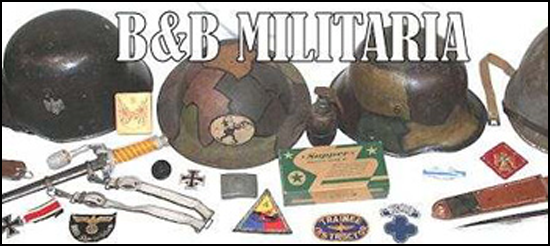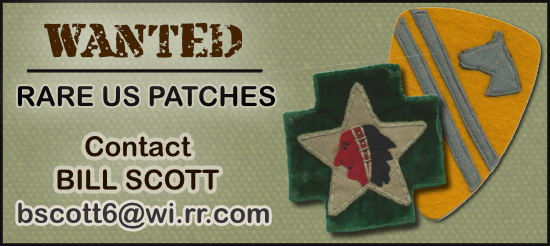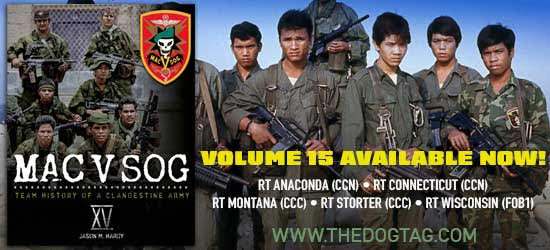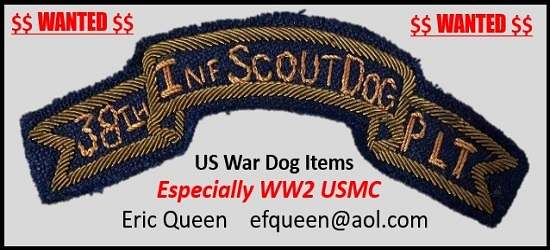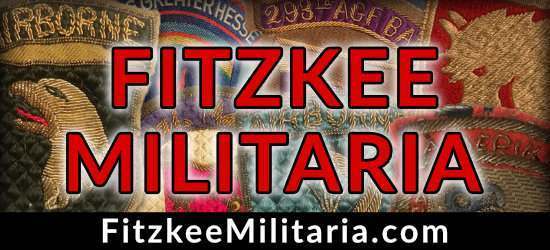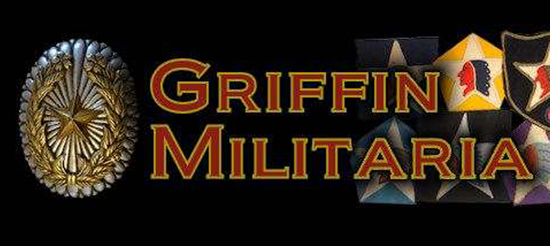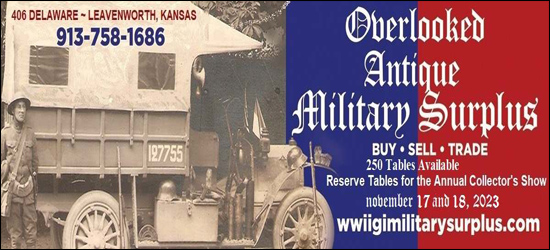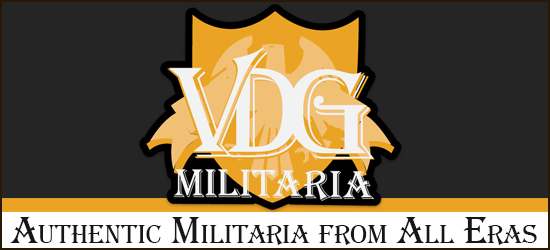-
Donate
Type donation amount in box below.
IMPORTANT! If you donate via PayPal using an e-mail address different than the one you are currently using on USMF and would like a 2024 Donor Icon added to your account, you MUST CONTACT vintageproductions or stratasfan and let them know what email address was used for the donation.
Thank you for supporting USMF.
Donate Sidebar by DevFuse -
Recent Posts
-
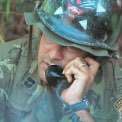
By CinamonToastCrunch · Posted
Colonel John F Kuznicki US Army Field Artillery Officer. 42nd ID staff officer during WW2, MacArthur’s HQ in Japan transportation section during the Korean War. Retired after years of serving with the Office of Research and Development that developed weapons and technology for the CIA. -

By Misfit 45 · Posted
I might be able to help a little, but my information is conflicting. On the one hand, this looks like a French Model 1842 sabre bayonet. It should be 27.4" (696mm) overall. Blade length 22.6 " (574mm). Muzzle ring .933" (23.7mm). If your measurements are significantly different, then it's something else. However, the bee hive mark is by a German maker Samuel Hoppe 1827-1885. I googled Samuel Hoppe and found that he made a French 1855 infantry sword. Maybe something to start with. Marv Moments ago I found a photo of a French Model 1842 that has a German maker F.W.H. which is for F.W. Holler. -

By Jeffro · Posted
Yes! Can we put a stop to AceDaily before he wrecks this site? Jeffro -

-

By TSC · Posted
2 months out to the next show. -

By Jeffro · Posted
AceDaily, did you read the thread? This patch is not associated with the 90th BG. -

-
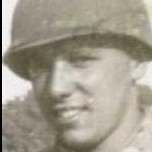
By tdogchristy90 · Posted
Merrell C. Fankhauser Merrell C. Fankhauser was born on March 17, 1920 in Powhattan, Ohio to Reuben and Nellie Fankhauser. In 1930, Reuben died, leaving Nellie to raise a number of kids alone. Merrell went to Grant School in Steubenville, Ohio until the 10th grade. He then helped support his mother by working as a mechanic, cab driver, and working for the Civilian Conservation Corps in Ohio. Three days after the Attack on Pearl Harbor, Merrell, wanting to learn a trade, filled out an application for the United States Navy. On December 30, 1941 Merrell Fankhauser was enlisted into the United States Navy at the United States Navy Reserve Station in Cleveland, Ohio. On January 2, 1942 Fankhauser began three weeks of recruit training, qualifying in swimming, indoor rifle range, and gas mask instruction at Naval Training Station, Norfolk, Virginia. He was then sent to a receiving shipping in New York, New York in late January. On February 2, 1942, Fankhauser was received aboard the New Orleans-class cruiser, USS Vincennes. In March, the USS Vincennes, screening vessel with Task Force 18 built around the aircraft carrier USS Hornet, left New York and headed for San Francisco, California. Once in California, TF 18 teamed up with TF 16 built around USS Enterprise, and set out across the Pacific in April, headed toward Japanese waters. On April 18, as part of the famous Doolittle Raid, the combined Task Forces of Hornet and Enterprise were on their way to strike Tokyo, Japan by unconventionally launching B-25 bombers from an aircraft carrier in a symbolic act of retaliation for the Japanese attack on Pearl Harbor. Steaming 150 miles from their planned launch point, the carriers were spotted by the Japanese, forcing the bombers to take off early for their bombing raid on Tokyo. While causing little damage to the capital, the U.S. raid demonstrated its resolve to remember Pearl Harbor. Retiring after launching their bombers, Enterprise and Hornet, arrived at Pearl Harbor in late April. Still screened by USS Vincennes, with newly rated Fireman 3rd Class Merrell Fankhauser, the task force quickly turned around and headed for combat in the Coral Sea, missing the action. They then returned to Pearl Harbor in late May. On May 29, 1942, the combined Task Force, with intelligence that Japanese forces were planning something, steamed towards the island of Midway. By June 4, USS Vincennes was screening north of Midway. The Battle of Midway was a carrier attack planned by the Japanese against the U.S. Island of Midway in an attempt to draw the American carriers into open battle so they could be destroyed. After American carrier planes had crippled the Japanese fleet in a decisive engagement that would limit their offensive action for the remainder of the war, USS Vincennes was sent to assist the carrier USS Yorktown which had been damaged in a Japanese dive bombing attack. While the USS Vincennes screened the Yorktown, a group of Japanese attack planes were picked up on radar headed for the carrier to finish her off. In the ensuing maelstrom, antiaircraft batteries from USS Vincennes managed to down an attacking Japanese carrier-based torpedo bomber. USS Vincennes returned to Pearl Harbor where it entered the navy yard and underwent repairs that lasted until July. On July 14, 1942, USS Vincennes left Pearl Harbor to rendezvous back up with Task Forces 16 and 18. Screening for transport squadrons planning the Guadalcanal landings, USS Vincennes joined Task Force 62 on July 26, 1942. The Guadalcanal Campaign was the first major land offensive against Japan following the attack on Pearl Harbor. Japan had been building an airfield on Guadalcanal that was deemed a threat to the transportation routes between the United States and Australia. The goal was to capture and neutralize this airfield. While screening transport division “Yoke”, USS Vincennes arrived off Guadalcanal Island on August 7, 1942. USS Vincennes then assisted with the bombardment of the island as the U.S. amphibious landings took place. Japanese planes counterattacked the formation and the USS Vincennes shot down two enemy planes before retiring to conduct screening patrols off the island. Returning to her covering duties the next day, USS Vincennes arrived at transport area “X-ray” off Guadalcanal. The Japanese sent more planes to disrupt the landings. USS Vincennes, dodging a torpedo and evading a bomb strike, managed to down seven planes using her main battery 8-inch guns. Later in the afternoon, aerial reconnaissance spotted a Japanese force coming from their base at Rabaul. It was believed the Japanese force was going to launch another air attack against the invasion force. Vincennes and her sister ships Astoria and Quincy, as the northern escort force, steamed to an area off Guadalcanal to screen the vulnerable transports still unloading onto the beaches. At about 1:45 on the morning of August 9, 1942, general quarters alarm was sounded as flares and star shells were spotted to the south when the allied southern escort force came under attack. As they hurried to their battle stations, the crew on USS Vincennes was about to face their own gauntlet as a similar Japanese force bears down on the cruiser and her two sister ships to the north. Ten minutes after the general quarters were sounded, USS Vincennes was spotted by a Japanese search light at 1:55. In response USS Vincennes opened fire on the search light with her 8-inch guns. Enemy shells rained in and battered the American cruiser, hitting her hard. Some shells tore through the hanger space, igniting fires as it destroyed the ship’s complement of aircraft. At about 2:00 a Japanese torpedo struck the #1 fire room. Losing all steering, Vincennes was dead in the water as she continued to be pummeled by an avalanche of shells. Hit more than 57 times by 5-inch and 8-inch shells, the Vincennes was left a burning hulk. By 2:10 the Japanese had left the three American cruisers of the northern force to burn and sink in the waters off Guadalcanal known as Iron bottom Sound. Fireman 3rd Class Merrell C. Fankhauser, according to a letter from his mother, was passing ammunition when he was killed in action aboard USS Vincennes during the Battle of Savo Island on August 9, 1942. Fankhauser was 22 years old when killed in action and is memorialized on the Tablets of the Missing, Manila American Cemetery and Memorial, Philippines. Merrell was his mother’s main support system so with his death she suffered greatly. She suffered from a nervous breakdown and other chronic ailments that had confined her to a hospital bed. Another son who had been in the army was discharged due to an ulcerated stomach and was unable to work. The death of her son, Merrell, affected her greatly and she died in the mid 1950s. The name Fankhauser is the correct spelling of this family name. Census records also show this spelling. Merrell C. Fankhauser’s Navy file shows Fankhauser as well as Frankhauser (with an R). The paperwork issuing the Purple Heart to the mother says Frankhauser and the subsequent medal is also engraved with Merrell C. Frankhauser. Sources: Ancestry Golden Arrow Research Naval History and Heritage Command -

By Shawdawg1998 · Posted
Thanks for the replies everyone. From the looks of the comments its a nice thought from some friends that will be taken care of and worn away from militaria shows where someone will throw a fit about an inaccurate item. -

By Edward C Bell · Posted
Awesome lot! Incredible to have something from the lost battalion.
-
-
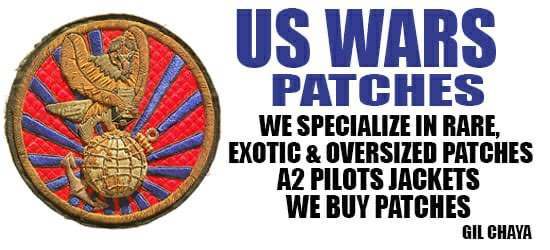
-

-
* While this forum is partially supported by our advertisers, we make no claim nor endorsement of authenticity of the products which these advertisers sell. If you have an issue with any advertiser, please take it up with them and not with the owner or staff of this forum.





